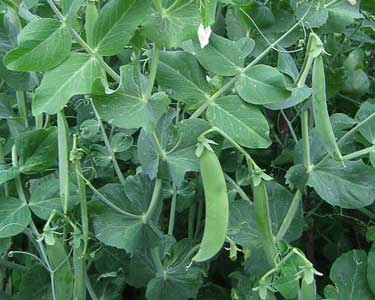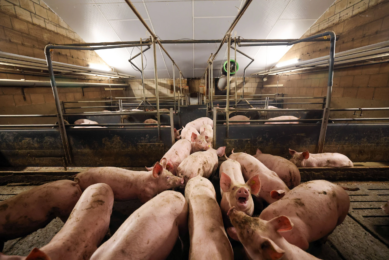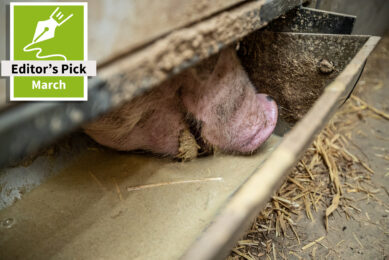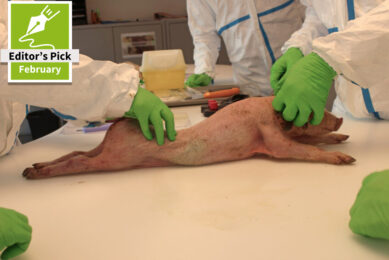Research: Field peas in pigs

At the Prairie Swine Centre in Canada the effect of particle size on the digestible energy content of field pea (Pisum sativum L.) in growing pigs was studied.
A study was conducted to determine the effect of particle size of field peas on (1) the digestible energy (DE) content in growing pigs of 11 field pea varieties and (2) the kinetics of starch hydrolysis of five of these field pea varieties measured in vitro.
Each field pea variety was ground with three screen opening-sizes: 5.4, 3.28 and 0.74 mm, resulting in a geometric mean particle size (GMPS) of 1035, 649 and 156 μm, respectively.
Trial setup
A total of 204 growing pigs (28 ± 2 kg; 34 treatments with 6 pigs/treatment) were fed for 13 d with a basal diet composed of cereals, soybean meal and a premix or 33 pea-based diets (0.3 field pea and 0.7 basal diet) supplemented with Celite (indigestible marker). Faeces were collected by grab sampling for the last 3 d.
A sequential in vitro hydrolysis of the starch of five of these field pea varieties at the three GMPS was conducted with pepsin (120 min) and a mixture of pancreatin, isomaltase and maltase enzymes (240 min).
Results
The DE concentration of the field peas varied from 13.38 to 16.05 MJ/kg DM. The average DE (16.1, 14.7 and 14.0 MJ/kg DM) decreased linearly with increasing GMPS.
The differences in the degree of starch hydrolysis were influenced by the interaction “field pea variety × GMPS” (e.g. for 1035 and 649 μm of GMPS, the hydrolysis for the Acer variety was 0.90 and 0.49 vs. 0.47 and 0.40 for the Pekoe variety, respectively.
There was a positive correlation between the DE and the degree of starch hydrolysis (r = 0.62).
Conclusion
The DE of ground field pea varieties in growing pigs increases linearly as GMPS decreases.
The differences in DE observed between field pea varieties can be explained by differences in starch hydrolysis and GMPS.











